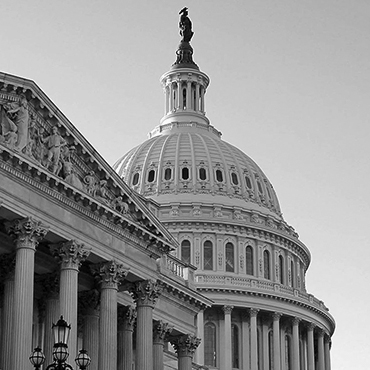MORE MILITARY FOCUS ON CLIMATE CHANGE
New U.S. Defense Secretary Lloyd Austin has not been shy about discussing the strategic implications of climate change for the national security of the United States. During his first few weeks on the job, Austin took pains to emphasize that climate change is now an increasingly prominent part of the Pentagon’s calculus in defending the American people. "Every year, our commanders and their allies and partners conduct operations that result from instability in societies strained by desertification, the threat of adversary access to homelands through the Arctic, and the demands for humanitarian assistance worldwide,” Austin said in public comments carried by reporters. “We know firsthand the risk that climate change poses to national security because it affects the work we do every day... It is a national security issue, and we must treat it as such.”
DoD has likewise begun incorporating climate change analysis into the Pentagon's planning documents, including wargame scenarios and evaluations of military readiness. For instance, the U.S. Army’s newest strategic document dealing with basing posture lays out that, “In addition to deliberate and directed attacks from adversaries, Army installations exist within a natural environment increasingly characterized by the effects of climate change, extreme weather events, pandemics, and environmental degradation. Such conditions will require adaptation of existing infrastructure.” (United States Army, December 2020; The Washington Times, February 3, 2021)
CANADA TACKLES CLIMATE SECURITY
In a report underwritten by Canada’s Department of National Defence, researchers from the Center for Climate and Security analyzed the climate threats facing the country in the context of its national security strategy. The study, entitled "A Climate Security Plan for Canada: How the Government of Canada Can Combat the Security Risks of Climate Change," identifies three broad categories of challenges - Anticipating Climate Change Risks, Adapting to the Changing Climate, and Acting Decisively in Response to Climate Change Impacts - and lays out a series of recommendations for Ottawa. "As a major Arctic player, member of NATO and the G7/G20, and upholder of international rules and norms, Canada has an opportunity to lead in integrating climate security risk management into multilateral institutions," the report notes. "Canada could play an outsized role in advancing understanding of climate change and security risks, another cross-cutting issue that will continue to reshape geopolitics and international security.” The study suggests Ottawa develop a comprehensive national strategy through a Climate Security Task Force to proactively plan for climate-driven change. (Center for Climate and Security, February 16, 2021; )
AFGHANISTAN’S DANGEROUS ILLICIT GOLD TRADE
In Afghanistan’s remote Badakhshan Province, the Taliban-controlled Raghistan District has become home to a number of illegal mining operations. Due to high unemployment rates and political conflict, citizens are forced to look for alternative means of generating income – and illicit mining has emerged as a prominent occupation. Recently, four Afghan gold miners lost their lives, and three others were injured, in a landslide caused by illegal gold mining. Improvised mining sites like these have proven deadly in the region in the past; the Kohistan district, also in Badakhshan Province, reported the deaths of at least 30 miners in an illegal mine in early 2019. The practice, however, is sure to continue. According to the U.S. Geological Survey, Afghanistan is home to potentially a trillion dollars of untapped mineral reserves, and illicit mining by insurgents and locals, carried out with tacit support from senior politicians, has become a lucrative – if dangerous – venture. (NPR, January 6, 2019; Anadolu Agency, February 22, 2021)
PLANNING FOR EXPANDED ACCESS TO THE ARCTIC
While commercial fishing in Arctic waters isn’t yet a lucrative trade, fisheries scientists predict that it may soon be, as warming waters in the Bering Sea and north Atlantic allow fish to explore new habitats in the Arctic Ocean. With the Arctic warming twice as fast as the global average, the melting ice cap is “reshaping the ecology of the Arctic ocean and waters just to its south, making fishing there increasingly attractive,” says Henry Huntington, a researcher who co-published a study on the subject last year in the journal Nature. In fact, according to Yale Climate Connections, some fish species have already begun migrating to the Arctic Ocean.
The U.S and Canada have banned commercial fishing in their sections of the body of water, with the other three bordering countries likely to follow suit. However, questions remain about the possibility of commercial fishing in the Central Arctic Ocean, which is not under the exclusive jurisdiction of any one nation. Geographically located roughly at the North Pole, sections of the Central Arctic Ocean have experienced rapid thawing every summer since 2002. Scientists hope that the Central Arctic Ocean Fishing Agreement, an international accord over a decade in the making, will be ratified this year, giving them time to study the rapidly evolving ecosystem and avoid the harmful fall-out of unregulated fishing witnessed in the Bering Sea in the 1980s.The agreement features signatories that would potentially trek the waters in future, including the U.S., Iceland, the Republic of Korea, the EU (representing members) and China. While all of the 10 signatories signed in 2017, all but China have since ratified the treaty. (Yale Climate Connections, February 25, 2021)

